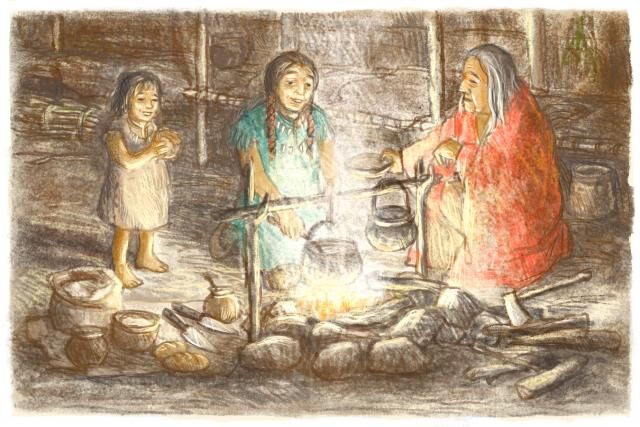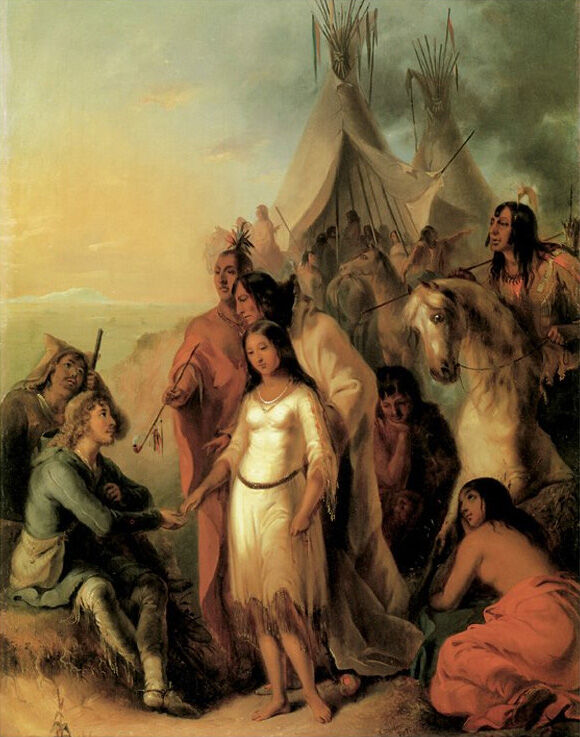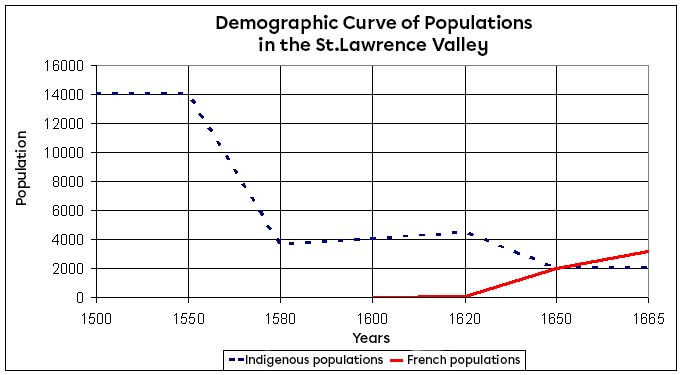The fur trade led the French to be continuously in contact with Indigenous peoples and this had major repercussions both for the French and the Native populations.
Acculturation is a social phenomenon that occurs when a group of people totally or partially adopts the culture of another group of people.
All throughout the French Regime, Indigenous peoples traded with the French to get European products that were very useful to them. These items, particularly tools and clothing, gradually became very important in the daily life of Indigenous peoples, so much so that they could no longer live without them.

In order to get more of these European goods, Indigenous peoples had to accumulate furs to trade with the Europeans. Some Indigenous nations began to change their traditional way of life in order to hunt for more fur animals. It can therefore be said that this frequent contact with the Europeans led to a degree of acculturation among Indigenous nations.

Missionaries also tried to change the culture of Indigenous nations by encouraging them to convert to the Catholic religion and adopt the French way of life.
Racial mixing is when two people from different ethnic origins form a couple. At the time, their children were called Métis.
The encounters between the French and Indigenous peoples led to many marriages between French men and Indigenous women. For example, many coureurs des bois, who worked with Indigenous groups and lived close to them, married a woman from the First Nations.

The children from these marriages, the Métis, lived with the Indigenous peoples and adopted most of their culture, setting them apart from the Canadiens.
Contact with the Europeans was hard on Indigenous peoples. In addition to the conflicts and wars caused by the fur trade, the illnesses that the Europeans brought with them were often fatal for Indigenous peoples. A large part of the population of the First Nations was decimated by being exposed to foreign diseases.
